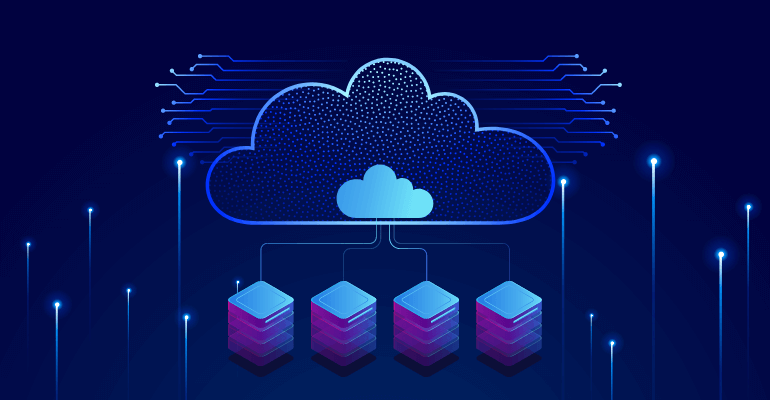
Why is it Better to Migrate On-Premise Data to Cloud
Cloud Migration is the process of moving digital operations into the cloud. It usually refers to transferring from On-Premises data centers or infrastructure to the cloud. These services allow you to manage IT infrastructure remotely without the security risk, inconvenience, and operational cost of maintaining On-Premises hardware.
Cloud Migration Strategy is the organization’s plan to move its data and applications from an On-Premises architecture to the cloud.
Benefits of Cloud Migration:
- Optimized Costs: In Public Cloud, you no longer have to worry about the costs and conditions of keeping physical servers running. The data center is managed by a third-party company, often on a subscription-based model, which cuts out capital expenditure for the end customer.
- Agility and Scalability: Cloud-based services automatically scale the capacity to growing or fluctuating demand and allow teams to collaborate on application updates or issues from anywhere instead of on-site. This level of continuity can give businesses a real competitive edge.
- Backup and Disaster Recovery: With the cloud, implementing backup and recovery solutions is less time-taking and requires less upfront investment for the hardware and the time to configure it.
- Security: Cloud offers better and more advanced security options than data centers to store your sensitive data and apps. Most cloud providers also keep unwanted traffic from accessing your data by rolling out regular security updates, leaving you free from security threats and free to take care of what matters to your business.
- Automate: Manual operations are exposed to a high error risk and are also time-consuming. In most cases, you can automate critical activities such as deployments, secrets exchanges, and configuration updates if Cloud infrastructure is leveraged. Automation leads to cost and time savings and reduces risk. Teams also become more efficient because they do not have to spend effort on repetitive tasks.
- Management and Monitoring: Using cloud providers management tools, organizations can manage and monitor cloud resources and even their on-premises data center from a single screen.
Cloud Migration Risks and Challenges
The migration process might require taking in-house servers temporarily offline. Outages could be disastrous to application and, by extension, customer loyalty — if not supported by proper backup or resource allocation. On its move to the cloud, your company’s data is most vulnerable.
Extreme care must be taken to minimize breach risk by applying cloud security controls such as privileged access management and encryption during data transfer.
- Cataloging the required software and their capabilities
- Categorizing applications and their workloads
- Destination identification for specific tasks
- Data security and staying compliant during the migration
- Automation capabilities
Overcome risk and challenge: These are only a few of many migration challenges that justify careful planning, testing, and resourcing. Work with a Cloud Consultant to account for these challenges before developing your cloud migration plan, and you can migrate with confidence.
Case study: Effective Cloud Consulting for Infrastructure Consolidation
Cloud Migration Strategies
- Re-Host: Lifting and Shifting the application and migrating it onto the cloud. Many cloud providers provide their services to enable this approach. This is the easiest if you are looking to migrate to the cloud.
- Re-Platform: Lifting and reshaping the application so that you can make it work for the cloud platform and leverage its features as well. It involves significantly few configuration changes, environment-specific changes and does not involve any modification in business-specific logic.
- Re-Factor/Re-Architect: Rewrite your application so that you leverage all the latest updated technology stack with cloud-native features and write decoupled applications on the cloud. This is the most time-consuming and expensive solution during migration but is one of the most resilient, agile, and cost-optimized hosting solutions on the cloud once the migration is completely done.
- Repurchase: Repurchasing completely replaces your application with a different SaaS product that you can purchase with a license directly on the cloud, replacing your application.
- Cloud-To-Cloud Migration: Moving from one cloud to another, like Azure to AWS. More than re-factoring, this would include replacing individual Cloud-specific services with a different ones. E.g., replacing Azure Blob Storage with AWS S3.
- Reverse Cloud Migration: Migration from the cloud to an on-site data center is called cloud repatriation, d-clouding, or unclouding. This is an improbable use case but can be required if your application is not supported on the cloud due to licensing or other issues.
Cloud Migration Checklist
This checklist walks you through the steps to plan, assess, and begin your AWS cloud migration strategy and offers resources to help you move to the cloud.
- Identify your team, involve stakeholders, get an overview of your IT landscape, and decide which applications to move to first.
- Choose the right migration strategies and solutions for your business and test performance in the cloud.
- Before migrating, inventory all on-premises servers and assess dependencies.
- You cannot declare a cloud migration successful without evidence that it works as expected. You can prove the benefits of cloud migration by comparing pre-and post-migration application performance in a low-risk test environment from both a technical and business perspective.
- After migration, continue to manage your clouds with optimized usage and better savings.
The included migration checklist helps you stay on track, ensuring you complete every step and always know what’s next. Let’s connect if you can migrate your on-premise data to the cloud.

Madhu Sudan works as a Sr DevOps developer in Anblicks and has hands-on experience of more than 5 years. He specializes in the software development lifecycle and believes that the cloud is the business sector’s future. Madhu holds an engineering degree in Electrical and Electronics Engineering.

